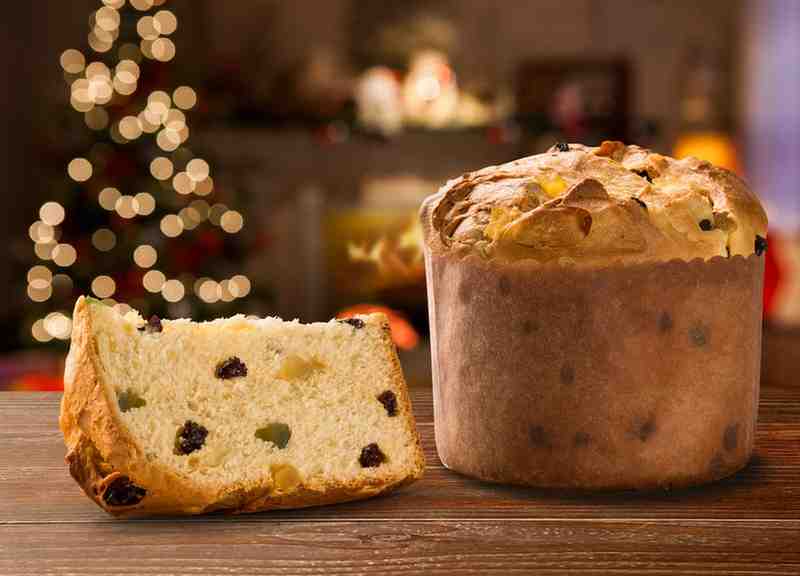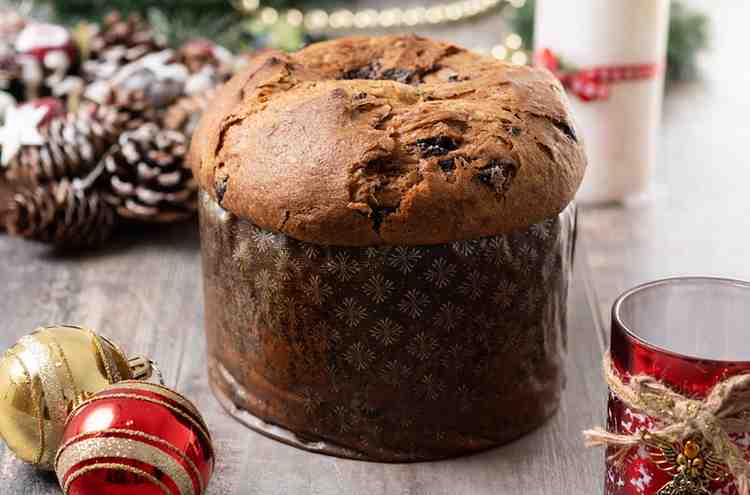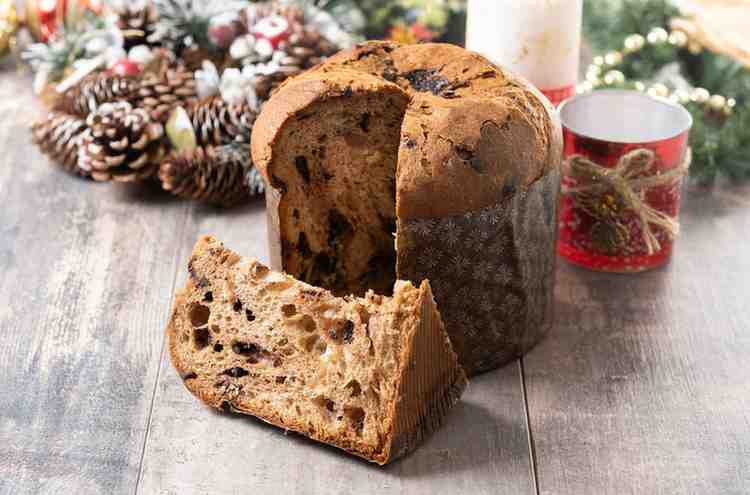Panettone is a staple during the holiday season, especially in Italy. This dome-shaped, fluffy bread is loaded with dried fruits and candied citrus, making it a sweet, celebratory treat. With a history rooted in Milan, panettone has become a global holiday favorite. The recipe is renowned for being both a delicate and rewarding baking experience. Let’s explore the traditional method of making this classic Italian bread.
The Origins of Panettone
The story of panettone dates back to 15th-century Milan. According to one legend, a young apprentice named Toni worked in a bakery and accidentally created this iconic bread by mixing extra butter and sugar into dough meant for another product. The result was a sweet, enriched bread that became an instant success. Over time, it was called “pane di Toni,” which eventually evolved into “panettone.”
Essential Ingredients for Panettone
To make traditional Italian panettone, you need simple, yet high-quality ingredients. Each one plays a key role in ensuring the bread’s soft texture and rich flavor.
Here’s what you’ll need:
- Flour: Use strong bread flour with high gluten content. This provides the necessary structure and elasticity.
- Yeast: Active dry yeast or fresh yeast is essential for the fermentation process, which gives panettone its airy texture.
- Butter: Adds richness and softness to the dough. Make sure it’s unsalted and at room temperature.
- Eggs: They contribute to the dough’s fluffiness and help bind the ingredients together.
- Sugar: Provides sweetness and helps in fermentation.
- Milk: Used to make the dough softer and add flavor.
- Dried fruits: Traditional panettone is studded with raisins, currants, and candied orange or lemon peel.
- Vanilla extract or citrus zest: Adds a hint of aroma and flavor.
Optional Ingredients:
- Chocolate chips: Some variations include chocolate for an added layer of decadence.
- Nuts: Almonds or hazelnuts can add crunch to the texture.

Key Points to Remember:
- Temperature: Room temperature ingredients (especially butter and eggs) ensure smooth incorporation.
- Yeast activation: Yeast needs warm water or milk to activate properly. Don’t use hot liquids, as they may kill the yeast.
Step-by-Step Guide: Preparing the Panettone Dough
Preparing the Dough
The heart of panettone lies in its dough, which requires patience and a precise technique. Follow these steps to create the perfect panettone dough.
- Activate the yeast:
- Dissolve the yeast in warm water (not hot!) with a pinch of sugar.
- Let it sit for 5–10 minutes until bubbles form on the surface. This means the yeast is alive and active.
- Mix the dry ingredients:
- In a large bowl, combine the flour and sugar.
- Add a pinch of salt and stir it in to balance the sweetness.
- Combine wet ingredients:
- In another bowl, beat the eggs and add milk, softened butter, and vanilla extract or zest.
- Gradually pour the wet mixture into the dry ingredients while stirring.
- Knead the dough:
- Turn the mixture onto a floured surface and knead for about 10 minutes.
- The dough should become smooth, elastic, and slightly sticky. Don’t add too much flour during this process.
- First rise:
- Place the dough in a lightly oiled bowl, cover it with a clean towel, and let it rise in a warm place for 2-3 hours. It should double in size.
Incorporating Dried Fruits
After the first rise, it’s time to add the classic panettone mix-ins, such as dried fruits and candied peels.
- Prep the fruits:
- Soak raisins and other dried fruits in warm water or a splash of rum for 30 minutes to soften them. Drain and pat dry.
- Add to the dough:
- Gently fold the dried fruits and candied peel into the dough after it has risen. Ensure they are evenly distributed without deflating the dough too much.
Second Rise and Shaping the Panettone
Shaping the dough properly ensures the characteristic dome shape of panettone.
- Shape the dough:
- After incorporating the fruits, divide the dough if making smaller loaves or shape it into one large round loaf.
- Place the shaped dough into a panettone mold or a deep paper baking mold.
- Second rise:
- Cover the dough again and let it rise in a warm place for another 1–2 hours, until it reaches the top of the mold.
- Be patient during this rise, as it will give the bread its light, airy texture.
Tips for the Perfect Rise:
- Keep the dough in a draft-free, warm place. Ideal rising temperature is around 75-80°F (24-27°C).
- Avoid opening the oven or disturbing the dough too much while it rises.
Baking the Panettone
Once the dough has risen and is ready to bake, follow these steps:
- Preheat the oven:
- Preheat your oven to 350°F (175°C).
- Bake the panettone:
- Place the dough in the preheated oven and bake for 40-50 minutes.
- If the top browns too quickly, cover it with foil to prevent burning while ensuring the inside is fully cooked.
- Check doneness:
- Insert a skewer or toothpick into the center of the bread. If it comes out clean, the panettone is done.
- Allow the bread to cool in its mold before removing it.
Cooling and Serving
Once baked, it’s important to cool the panettone properly to maintain its shape and prevent collapse.
- Cool upside-down: Traditional panettone is cooled upside-down. Insert skewers through the base of the bread and hang it upside-down between two elevated surfaces to ensure the dome doesn’t sink.
- Slice and serve: Once cooled, slice the panettone into wedges and serve. It’s perfect with a cup of coffee or a glass of dessert wine.

Enhancing the Flavor: Tips and Tricks
While the traditional panettone recipe is delicious on its own, there are several ways to enhance its flavor and make it even more special. From infusing the dough with unique ingredients to experimenting with fillings, let’s explore a few creative ideas that will take your panettone to the next level.
Infusing the Dough with Additional Flavors
- Citrus Zest: While traditional panettone already calls for candied citrus peel, adding fresh lemon, orange, or even lime zest to the dough will bring a bright, fresh flavor.
- Vanilla Bean: For a more pronounced vanilla flavor, consider using the seeds from a vanilla bean instead of vanilla extract. The tiny flecks of vanilla throughout the dough also add a visual appeal.
- Almond Extract: A few drops of almond extract can add a slightly nutty, fragrant undertone, complementing the buttery richness of the bread.
- Liquor Soaked Fruit: Soak the dried fruits (raisins, currants, or cranberries) in rum, brandy, or even amaretto overnight. This step enhances the flavor of the fruits and adds complexity to each bite.
Adding Fillings and Toppings
- Chocolate Chips: For a more indulgent take on panettone, fold in chocolate chips during the final mixing stage. The warmth of the oven will melt the chocolate into little pockets of gooey goodness.
- Nuts: Chopped hazelnuts, almonds, or pistachios can be added for an extra crunch. Toast the nuts beforehand to intensify their flavor.
- Cream or Custard Fillings: For a more decadent version, some bakers inject custard or cream into the baked panettone. Vanilla or mascarpone cream is a popular choice.
Toppings and Glazing
- Almond Glaze: For an extra touch of sweetness, brush the top of the dough with an almond glaze made from powdered sugar, egg whites, and ground almonds before baking. This will create a sweet, crunchy top layer.
- Powdered Sugar Dusting: Once the panettone has cooled, dust it with powdered sugar for a festive touch.
- Icing Drizzle: For a modern twist, drizzle a simple icing made of powdered sugar and milk over the top.
Panettone Variations: Beyond the Classic Recipe
The classic panettone is known for its light texture and fruity inclusions, but there are many delicious variations to experiment with. These alternatives are perfect if you want to try something different or cater to specific dietary preferences.
Chocolate Panettone
If you’re a chocolate lover, this variation is for you. Simply swap out the dried fruits for high-quality dark or milk chocolate chunks. You can also drizzle melted chocolate over the top for an extra indulgent touch. The contrast between the sweet, buttery bread and the rich, velvety chocolate is divine.
Nutella-Filled Panettone
For a modern Italian twist, try filling your panettone with Nutella. After the dough has risen for the second time, create a small cavity in the center and spoon in a generous amount of Nutella before baking. This creates a luscious, gooey chocolate center that oozes out with each slice.
Gluten-Free Panettone
For those with gluten sensitivities, you can still enjoy panettone by using gluten-free flour blends that are specifically formulated for bread-making. These blends usually contain a mix of rice flour, tapioca starch, and xanthan gum to mimic the structure of gluten.
Vegan Panettone
Vegan panettone is becoming more popular, especially for those who avoid animal products. Swap out the butter for plant-based alternatives, and use almond or oat milk instead of dairy. You can also use a flaxseed mixture in place of eggs to bind the dough.
Storing and Enjoying Your Panettone
Once your panettone is baked and cooled, proper storage is key to maintaining its freshness and flavor. Since panettone is an enriched dough, it tends to stay fresh for a longer period compared to regular bread, but you’ll want to take a few steps to ensure it lasts.
Storing Panettone
- Wrap it Well: Wrap your panettone tightly in plastic wrap to keep it from drying out. For additional protection, place it in a sealed plastic bag or airtight container.
- Keep it at Room Temperature: Panettone should be stored at room temperature, ideally in a cool, dry place. Avoid refrigerating it, as this can cause the bread to dry out quickly.
- Freezing for Long-Term Storage: If you want to store your panettone for an extended period, freezing is a great option. Wrap the bread tightly in plastic wrap and then in aluminum foil to prevent freezer burn. When ready to eat, thaw it at room temperature, and reheat it in a low oven for a few minutes to restore its softness.
How Long Does Panettone Last?
When stored properly, panettone can stay fresh for up to two weeks at room temperature. If you freeze it, it can last up to three months. However, for the best flavor and texture, it’s recommended to enjoy it within the first week of baking.
Serving Ideas for Panettone
Panettone is delicious on its own, but there are plenty of ways to get creative with how you serve it. Whether you’re looking for a simple breakfast treat or an elaborate dessert, these ideas will take your panettone to new heights.
Toasted with Butter
One of the simplest and most satisfying ways to enjoy panettone is by toasting a slice and slathering it with butter. The heat enhances the sweetness of the bread, while the butter adds richness.
Panettone French Toast
Turn leftover panettone into a luxurious breakfast by making French toast. Dip thick slices of panettone in an egg mixture with a bit of milk, cinnamon, and vanilla, then fry them until golden. Serve with fresh berries, whipped cream, or a drizzle of maple syrup.
Panettone Bread Pudding
For a comforting dessert, transform panettone into bread pudding. Cube the bread and layer it in a baking dish with a mixture of eggs, milk, sugar, and spices. Bake until the top is golden and crispy, and serve with a warm caramel sauce or a dollop of ice cream.
Panettone with Mascarpone Cream
For a more traditional Italian dessert, serve slices of panettone with mascarpone cream. Simply whip mascarpone cheese with a bit of sugar and vanilla extract until light and fluffy. Spread this creamy mixture over the panettone for a rich, indulgent treat.

